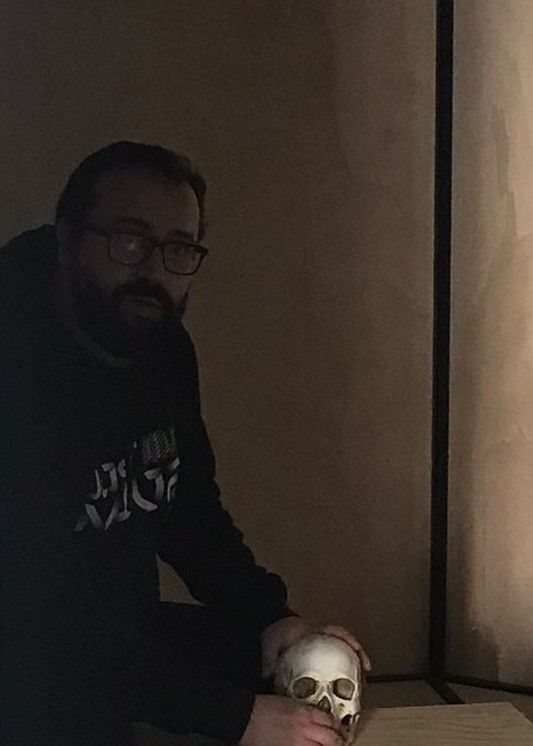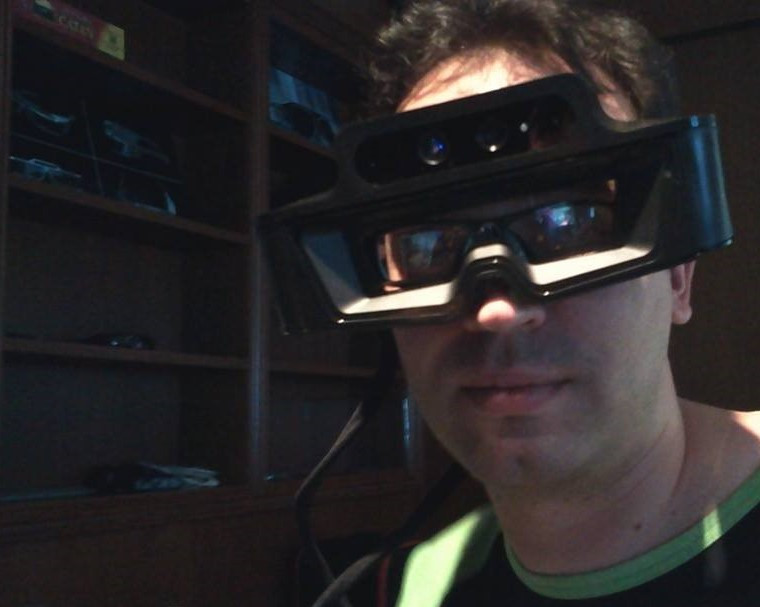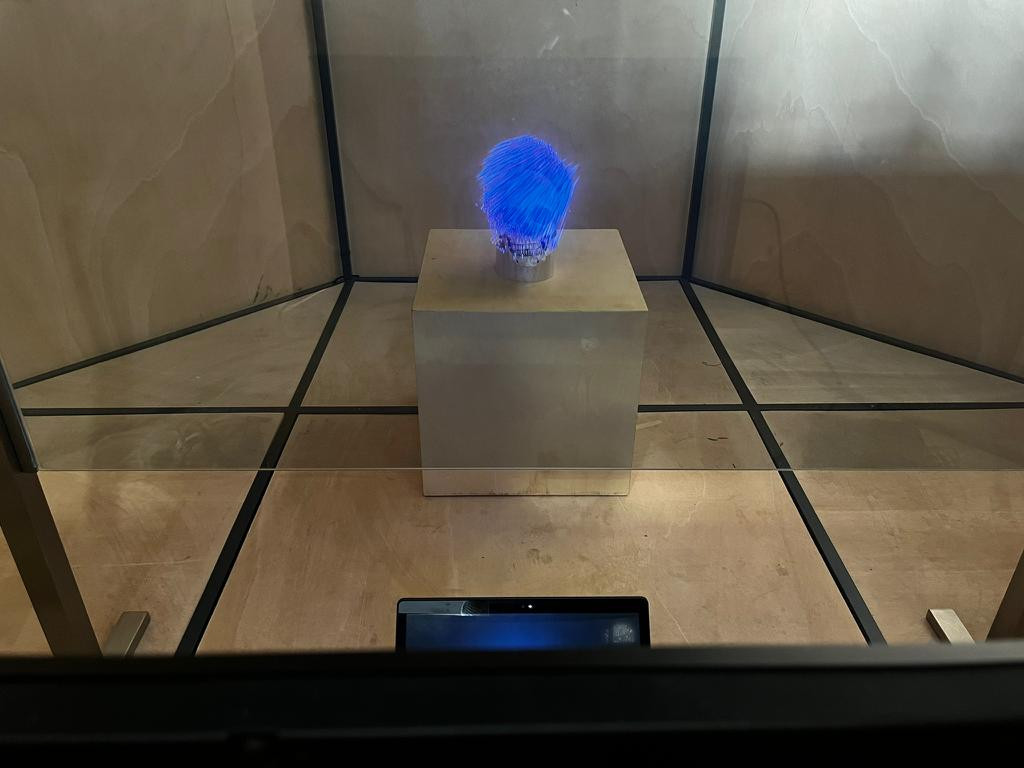
The piece in question was on display at the Egas Moniz Building and allowed the public to create an interaction with the Digital Twin concept. Sérgio Eliseu explains that this is also the name of the piece. The name corresponds to the concept of a virtual representation that needs a system or a physical process to exist.
Let's get to know it in the next lines...


What is your background?
Sérgio Eliseu: PhD in Art and Design from the Faculty of Fine Arts of the University of Porto. Master in Contemporary Artistic Creation by the Department of Communication and Art of Deca. Degree in Art History from the Faculty of Letters of the University of Coimbra.
Invited Assistant Professor at the University of Aveiro, as well as at the Polytechnic Institute of Cávado and Ave and also at the Institute of Educational Sciences of Douro. He has been exhibiting in artistic contexts since 1994 and is the promoter of a cultural space in the village of Lousã: Atelier Eliseu.
Tell me a bit about yourself. Where you were born, your background…
Sérgio Eliseu: I was born in 1979 in Coimbra and grew up in Lousã, in a family dedicated to the arts. My father took me from an early age to collaborate in the conservation and restoration services he carried out and, simultaneously, to painting exhibitions where he also participated a little all over the country. I grew up in this environment of artistic production that allowed me to get to know various artistic techniques very closely. Mainly the more traditional ones. Later, through academic training and research, I ended up starting to integrate other tools with more recent technologies into my projects.
How did this partnership with Blend Sessions come about?
Sérgio Eliseu: Through an invitation from “Cultivamos Cultura”. By the way, I take advantage of your question to thank Marta Menezes and the collaboration of Nuno Sousa, Sally and Cláudia Figueiredo from the Cultivamos Cultura team, as well as Brígida Riso from the iStars project.
We have a piece on display that allows or promotes an interaction between the work on display and the visitor. Do you usually take this dynamic into consideration?
Sérgio Eliseu: Yes. Since 2007, the year I started attending the master's degree in Contemporary Artistic Creation at the University of Aveiro, this type of dynamics began to be considered in my projects. The role of the audience in the work of art, the relationship between technology (more specifically Virtual and/or Augmented Reality) and artistic production are issues that, along with concepts such as immersion, perception and reality, still accompany me in the creative process.


What message do you want to create and get across?
Sérgio Eliseu: The piece is called "Digital Twin". The name corresponds to the concept of a virtual representation that needs a physical system or process to be represented. Today, these representations are used in many industrial sectors, in construction, health and transportation, among others, to improve efficiency, reduce costs and increase safety.
I sought to explore how Digital Twins relate to our understanding of the physical world and how they can be used to create forms of art and expression.
The piece harks back to the ancient and deep desire of humans to achieve technological perfection and immortality. Although the reading is always open and an invitation to reflection through experimentation, my perspective nevertheless focused on a deep irony around a human being, already dead, whose digital replica is still alive. Orphaned, constantly adapting to its degradation and to the other who observes it. As if technology, immortal, refused to surrender to our inevitable mortal condition. On the other hand, the background sound also helps to interpret the piece. A very brief version I made of "Dies Irae" at low speed.

Which materials are used?
Sérgio Eliseu: A replica of a human skull, a computer, a webcam, a tempered glass stand with holographic film, speakers and a TV. It combines sounds and interactive holographic projections of three-dimensional particles with real-time shape changes mixed with real-world artifacts.
Under what circumstances was this skull that looks like Arthur C. Clarke's crystal skull "born"?
Sérgio Eliseu: The piece refers to a futuristic volumetric and metaphorical digital Artificial Intelligence (AI) inspired by the evolution of the current Digital Twin concept. Through this futuristic prism, I admit that this relationship with Arthur C. Clarke is possible. However, it all started in the context of an artist residency with the sharing of knowledge with the scientist Maged K. Boulos about his activity with this concept of the Digital Twin. The work, however, ends up being the result of a more personal deepening of the path taken to understand this concept and the new questions that thus emerged: how can these "Digital Twins" concepts be used to create immersion in virtual environments? How can they be used to create interactions with the physical world? How can they affect our understanding of reality?
Dora Estevens Guerreiro
Editorial Team


